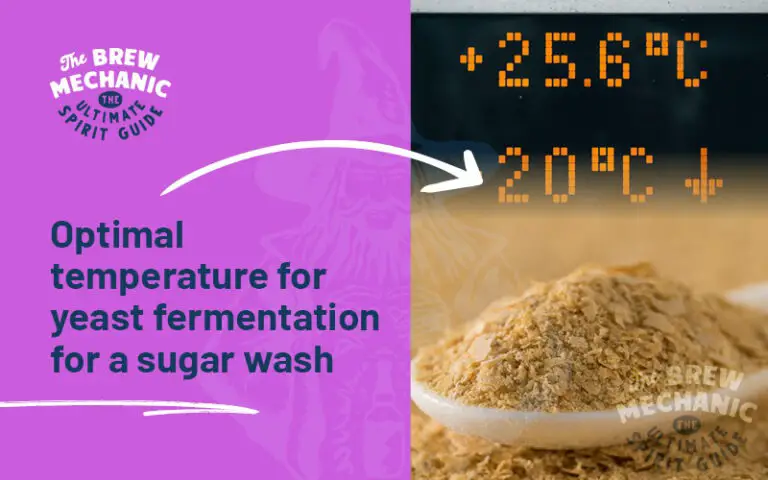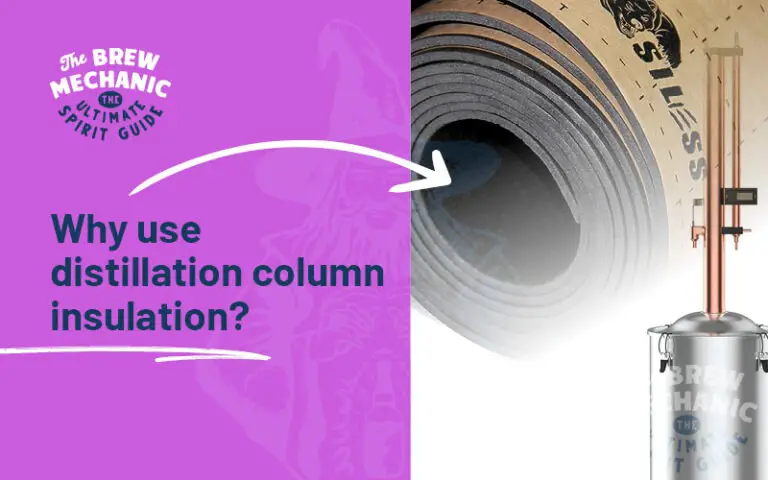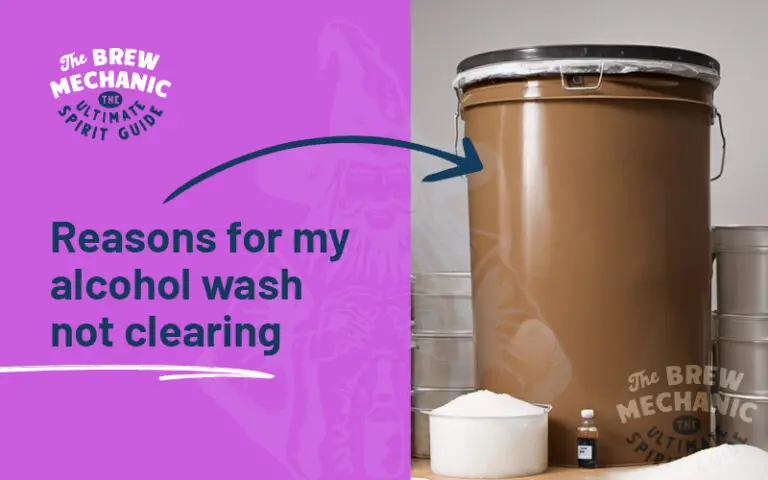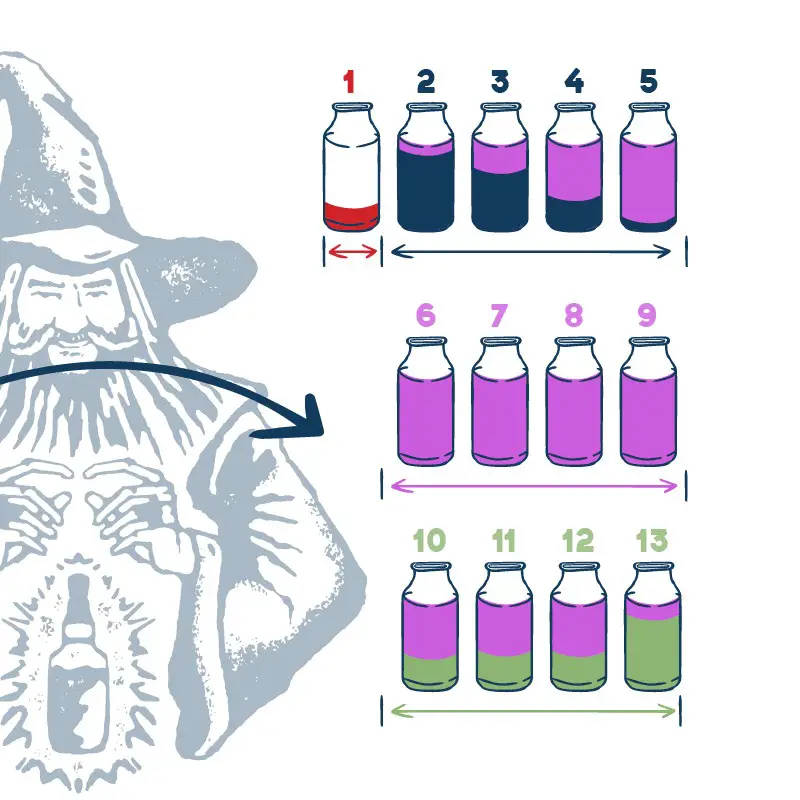The importance of the airlock fermentation process
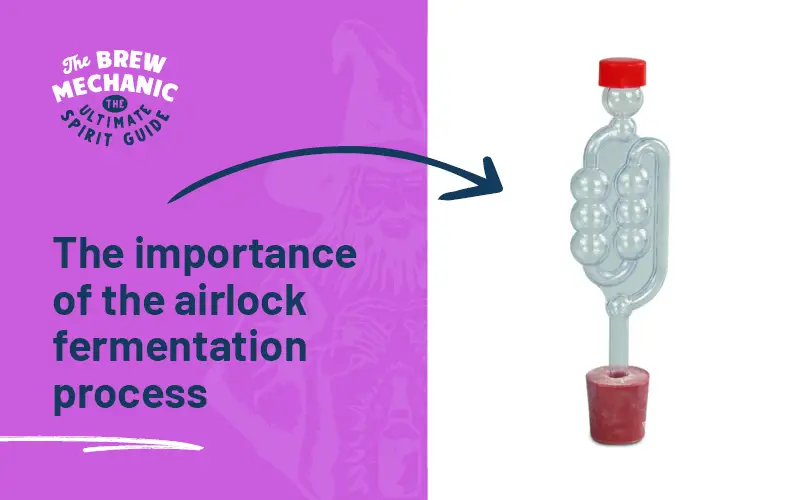
Disclaimer: This post might include affiliate links, through which I may earn a small commission without any extra cost to you. Additionally, I am an Amazon Associate and earn from eligible purchases. All the products and services I suggest are ones I have personally used or would use. Thank you very much for your support if you decide to buy through any of my links!
Come join the Distilling Squad!
Get the best fundamental tips & tricks here. Woohoo!
Once you are stuck in the DIY home brewing world, understanding the airlock fermentation process is key!
This little device plays a crucial role by allowing CO2 to escape from the fermenter while preventing oxygen and bacteria from getting in. It also helps you monitor the fermentation progress by showing how quickly bubbles are escaping.
The Purpose And Importance Of Airlock In Fermentation for Brewing
The airlock fermentation purpose is simple it is designed to only allow the CO2 out from the fermenter. In simple terms, it regulates the airflow from the fermenter to the atmosphere through a controlled outlet access.
The other important factor is that it tells you how the ferment is processed in the cycle through the rate at which the bubbles escape.
The airlock also tells when the fermentation is slowing down and eventually stops towards the end of fermentation.
The CO2 gas produced during fermentation passes through the airlock that has a minimum water level in it and can be visually seen as bubbles escaping to the atmosphere.
The airlock acts as a non-return valve that only allows the gas out but prevents the oxygen and bacteria outside from entering due to the water level in the unit.
Background On Alcoholic Fermentation Airlock
There are two phases.
First Phase
The first phase (aerobic) is when the airlock is not needed when oxygen is introduced into the sugar wash before the yeast is added, which is needed to start the reaction. The lid can be loosely fitted onto the fermenter to control the bubbles and crust that forms on the surface of the solution during primary fermentation. In this crust, bubbles are worked back into the primary ferment.
Second Phase
The bubbles and crust are under control and the second phase (anaerobic) is started by sealing the lid and the airlock is commissioned by filling it to roughly 30% level with water. It should start to bubble within one hour or you have a problem.
The basic principle of alcoholic fermentation is carried out under anaerobic slight pressure conditions where the yeast converts the sugar into ethanol and CO2 as a by-product.
The airlock fermentation plays a big part in the conversion from sugar to ethanol as it blankets the surface to prevent oxygen and bacteria from entering the fermenter hence the Air Lock. (non-return valve)
What Impact Does A Leak In The Fermentation Vessel Have?
The answer to this is yes it will impact the fermentation cycle.
The CO2 produced must only escape from the airlock. If there is a leak on the lid, it can allow oxygen and wild yeast (bacteria) back into the fermenter. which will affect the fermentation cycle creating off flavours, smells and drop in yield and possible failure of the batch.
Remove the lid, wash the rubber seals then add some Vaseline to the rubber seals, and lips to help prevent leaks. This should have been done before fermentation started. One of the pre-checks before fermentation starts.
To help find the leak on the lid make up a small amount of water and dishwash liquid. Spray onto entry points and check for bubbles.
How Do We Test The Ferment Airlock To Make Sure It Is Working
Once the fermentation cycle starts and CO2 gas is being produced, you do the following.
Push gently on the sides and check for gas escaping via the airlock in the form of bubbles. Next, gently push on the lid and make sure that the CO2 gas is only escaping via the fermentation airlock.
The airlock fermentation process is essential for your brew!
For home brewing, airlock fermentation plays an essential for a successful fermentation process. It ensures that only CO2 escapes, preventing any unwanted oxygen or bacteria from entering and spoiling the brew.
Regular checks and maintenance of the airlock and seals can help avoid potential issues, ensuring your brewing experience is smooth and successful.
Last Updated on June 22, 2024 by The Brew Mechanic
Disclosure: I may receive affiliate compensation for some of the links below at no cost to you if you decide to purchase a product or service. You can read our affiliate disclosure in our privacy policy. The information provided is for entertainment only.

With 35 years of knowledge of being a chemical engineer in alcohol manufacturing plants, my mission is to teach the next generation of home distilling alcohol brewers at a supernatural speed.
My reviews are based on real-life experiences with reflux stills, sugar wash, troubleshooting and mystical chemical reactions.

